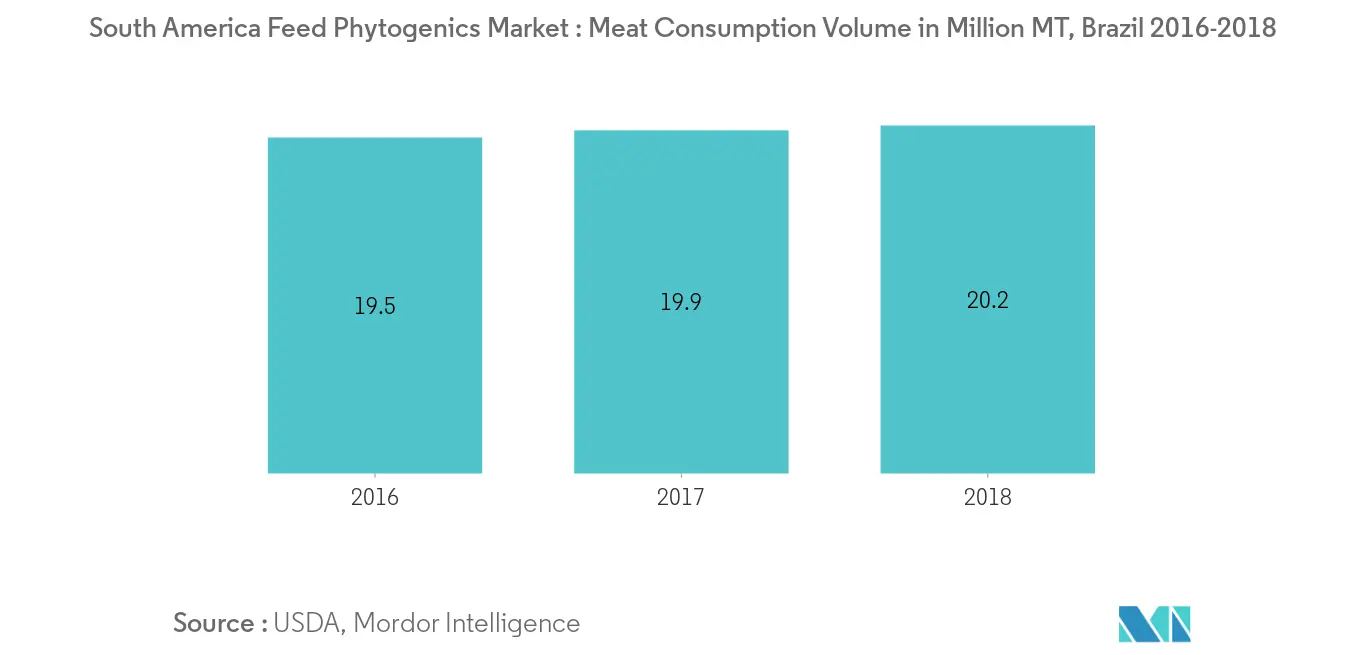Market Trends of South America Feed Phytogenics Industry
This section covers the major market trends shaping the South America Feed Phytogenics Market according to our research experts:
Increasing Production of Animal Feed Driving the Market
The increasing production of feed is driving the feed phytogenic market, owing to the accelerated efficiency and performance and health-induced benefits of phytogenics in animals. The demand for an improved feed conversion ratio and antibiotic-free additives from a growing number of livestock producers are further inducing the need for the botany-based feed additives. According to the AllTech feed survey in the year 2019, South America has 3,715 feed mills with an annual production capacity of 102.2 million metric tons. The need for superior quality meat and dairy products from health enthusiasts and increasing popularity for natural ingredients in pet food are further leading producers to capture the untapped profits in the phytogenic industry. The regional requirement for high volumes of feed and feed additives has resulted in extensive scientific research in the area and is projected to drive the overall market for feed phytogenics in the coming years.

Growing Inclination Towards Meat and Animal Based Food
The demand for higher value and quality foods, such as meat, eggs, and milk, is increasing, compared to plant-originated foods, such as cereals, owing to the rising demand for greater food varieties and protein intake. These changes in consumption, together with sizeable population growth, have led to large increases in the total demand for animal products in the region. Furthermore, this trend is expected to continue in the coming years. Farmers face a lot of challenges in maintaining the animal's health while keeping the cost of feed at an economical level. All these factors have resulted in gaining popularity of phytogenic feed additives in animal nutrition, as they are cost-effective solutions, which enhance animal performance. Essential oils are the major additives preferred by the consumers as they are benefiting the farmers in improving animal performance and profitable returns. They are preferred as they have resulted in better performance by improving the digestion, feed intake, and conversion ratio.


